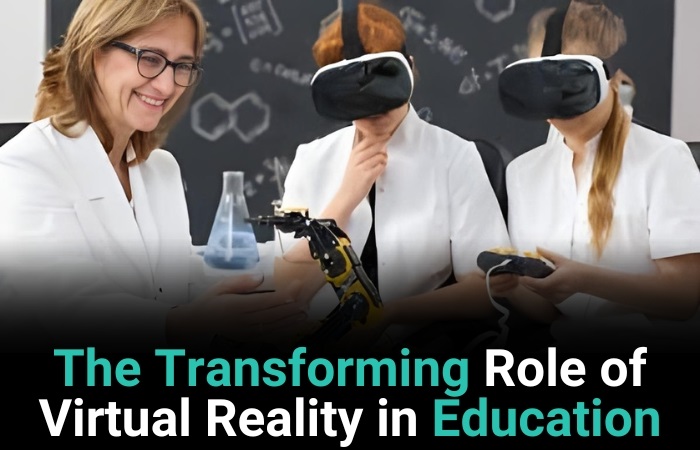
Virtual Reality is altering numerous life sections including education by creating an immersive digital learning environment. The interactive virtual objects for students and educators of all ages. In the educational sector, VR is developing rapidly and becoming more accessible and affordable. This is redefining or replacing traditional education by making learning tools more realistic and interactive learning spaces are more engaging, efficient, and experimental.
What is Virtual Reality (VR)?
Virtual Reality is a three-dimensional (3D) environment creating computer-generated models for users to interact with each other through particular equipment VR headsets and controllers. This allows users to feel present within the VR environment and increase their sensory experiences. VR bridges the gap between theoretical learning and practical application by creating highly attractive and impactful educational skills.
VR and Education
VR offers interactive and immersive learning environments by integrating traditional educational models. The following are key applications of VR in education:
1. Virtual Trips
Helps explore ancient landmarks and underwater areas and also creates an environment of global culture.
2. STEM Education
Conducting virtual lab experiments makes it more dangerous but less risky, also its 3D model structure with real-time gives feedback on physics and chemistry reactions.
3. Skills Training
Engaging real-world situations and visualizing practical approaches, also organizing teachers' training that helps in improving the tech skills of teachers with realistic approaches. These skills are also helpful in soft skills such as medicine, aviation, and engineering
4. Special Education
Offering a new program for special students with focus, engagement, and interactive content to support therapy for disabled students with inclusive classrooms.
5. Language Learning
Engaging in immersive classrooms with native virtual speakers to increase pronunciation with the help of interactive lessons. VR also sets cultural settings by creating immersive and contextual language learning.
6. Collaborative Learning
Creating VR projects and business presentations to increase cross-culture learning and facilitating remote learning to provoke immersive virtual classrooms.
Benefits of Virtual Reality in Education
Virtual Reality offers numerous advantages in educational settings, enhancing both teaching and learning experiences. Below is a table highlighting the core benefits of VR in education.
Improved engagement with interactive and immersive learning
Improved retention and immersive experiences help memorizing
Safe learning environment and organize daring challenges without risk of loss
Easy virtual experiences for remote students
Real-world application by bridging the gap between theory and practice
Cost-effective training by reducing physical equipment requirement
Challenges and Limitations of VR in Education
VR holds certain challenges associated with its application:
Expensive VR hardware and software
Technical issues need innovative and tech support
Health problems may arise such as motion sickness and eye strain
High-quality content availability for VR education
Teacher training to integrate VR effectively
Data privacy in virtual environments
(1).jpg)
Future of Virtual Reality in Education
The future of VR in education is promising as technology innovation continues to make it more affordable and available.
Key future trends include:
AI integration and VR for personalized learning
Remote learning enhanced global education access
Gamification incorporates learning to boost engagement
Multi-sensory experiences for multiple learners
Assessing Cloud-Based VR learning without expensive hardware
Augmented Reality (AR) and VR Combination for hybrid learning experiences